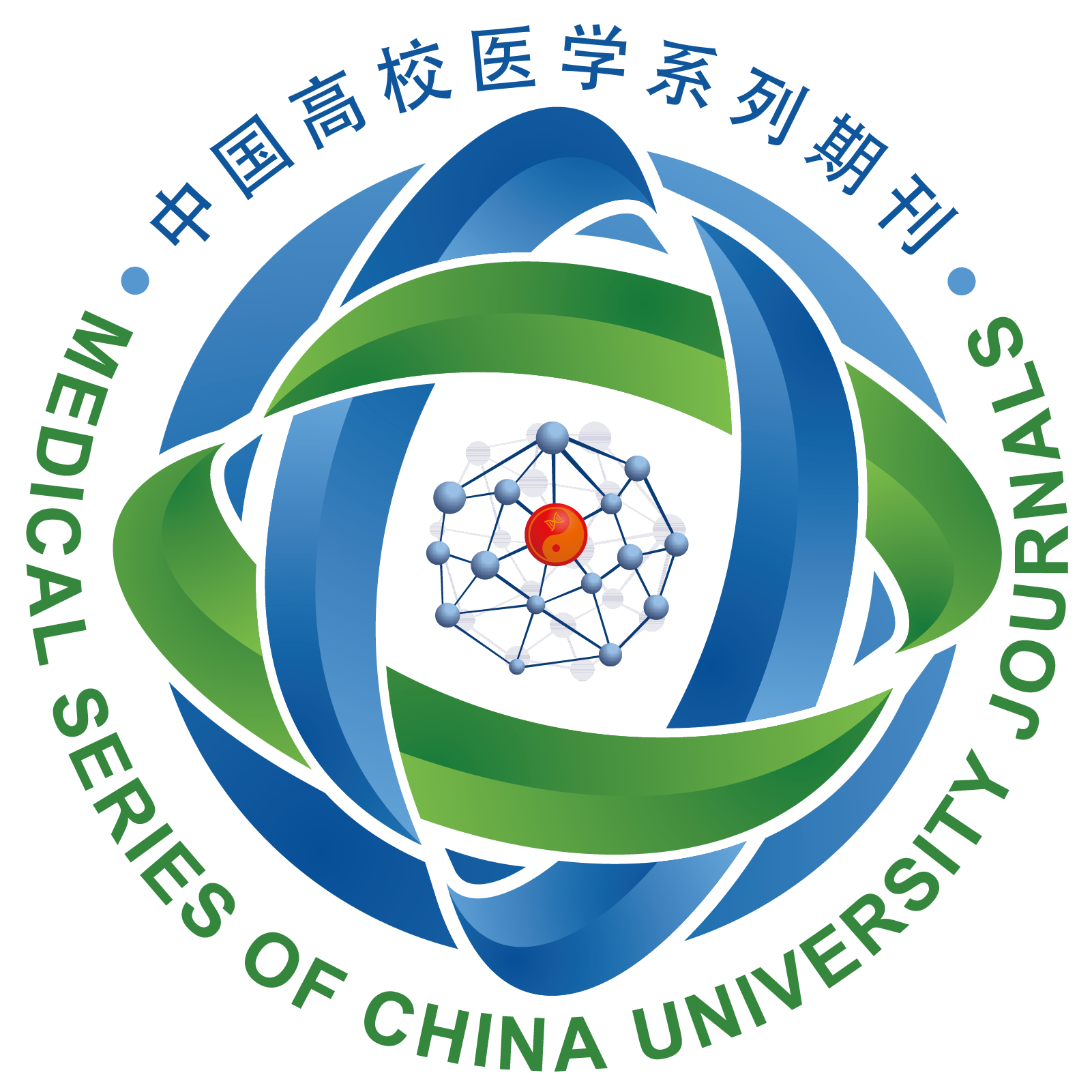Effect of adriamycin combined with Mcl-1 inhibitor Marinopyrrole A on drug resistance and apoptotic protein expression in hepatocellular carcinoma cells
-
摘要 目的: 探究阿霉素(ADM)与髓样细胞白血病-1(Mcl-1)选择性抑制剂Marinopyrrole A联合使用抗肝癌活性及相关分子机制。方法: 以肝癌Huh7细胞和HepG2细胞为研究对象,采用MTT法检测ADM、Marinopyrrole A及两者联用对肝癌细胞的抑制作用;光学显微镜下观察细胞形态学变化;流式细胞仪检测不同处理组细胞的凋亡率,蛋白质免疫印迹(western blotting)法检测细胞多药耐药蛋白1(MDR1)、穹窿主体蛋白(MVP)、Mcl-1、剪切型多聚ADP核糖聚合酶(Cleaved-PARP)/PARP、Bcl-2、Bax等耐药和凋亡相关蛋白的表达。结果: ADM对HepG2和Huh7细胞的半数抑制浓度(IC50)分别为(3.557±0.640)μmol/L、(1.178±0.127)μmol/L,HepG2细胞对ADM的敏感性低于Huh7细胞(P<0.01)。HepG2细胞的MDR1、MVP和Mcl-1蛋白表达水平均高于Huh7细胞(均P<0.01);与control组和单独ADM处理组比较,Marinopyrrole A联合ADM可使HepG2细胞密度减少,细胞皱缩变小,细胞凋亡率显著升高,MDR1、MVP、Mcl-1蛋白表达下调,Bcl-2/Bax比值减小,Cleaved-PARP/PARP比值增加(均P<0.05)。结论: Mcl-1抑制剂Marinopyrrole A可增加肝癌细胞对ADM的敏感性,可能与下调耐药相关蛋白MDR1、MVP和抗凋亡蛋白Mcl-1的表达有关。
-
关键词
- 肝癌 /
- 阿霉素 /
- Marinopyrrole A /
- 髓样细胞白血病-1抑制剂 /
- 联合用药
Abstract Objective: To explore the anti-hepatoma activity and related molecular mechanism of adriamycin (ADM) combined with the selective inhibitor Marinopyrrole A of myeloid cell leukemia-1 (Mcl-1). Methods: Hepatocellular carcinoma Huh7 cells and HepG2 cells were used as research objects. The inhibitory effect of ADM, Marinopyrrole A and Marinopyrrole A combined with ADM on hepatocellular carcinoma cells were detected by the methyl thiazolyl tetrazolium (MTT) assay, and the morphological changes of the cells were observed under light microscope. The apoptosis rates of cells in different treatment groups were detected by flow cytometry. The expression of multidrug resistance protein 1 (MDR1), major vault protein (MVP), Mcl-1, Cleaved poly ADP ribose polymerase (Cleaved-PARP)/PARP, Bcl-2, Bax and other drug resistance and apoptosis-related proteins was detected by western blotting. Results: The half inhibitory concentrations (IC50) of ADM on HepG2 and Huh7 cells were (3.557 ±0.640) μmol/L and (1.178 ±0.127) μmol/L, respectively. HepG2 cells were less sensitive to ADM than Huh7 cells (P<0.01). The protein expression levels of MDR1, MVP and Mcl-1 in HepG2 cells were higher than those in Huh7 cells (all P<0.01). Compared with the control group and ADM treatment group alone, Marinopyrrole A combined with ADM decreased the density and shrinkage of HepG2 cells, and significantly increased the rate of apoptosis, down-regulated the expression of MDR1, MVP, and Mcl-1 proteins, decreased the Bcl-2/Bax ratio, and increased the Cleaved-PARP/PARP ratio (all P<0.05). Conclusion: The Mcl-1 inhibitor Marinopyrrole A can increase the sensitivity of hepatocellular carcinoma cells to ADM, which may be related to down-regulating the expression of drug resistance-related proteins MDR1, MVP and anti-apoptotic protein Mcl-1. -
-
[1] NEGI A, MURPHY P V. Development of Mcl-1 inhibitors for cancer therapy[J]. European journal of medicinal chemistry, 2021, 210:113038.
[2] YANG C, ZHANG H, ZHANG L, et al. Evolving therapeutic landscape of advanced hepatocellular carcinoma[J]. Nature reviews. Gastroenterology&hepatology, 2023, 20(4):203-222.
[3] HENDI Z, ASADI SARABI P, HAY D, et al. XBP1 as a novel molecular target to attenuate drug resistance in hepatocellular carcinoma[J]. Expert opinion on therapeutic targets, 2023,27(12):1207-1215.
[4] MOSSENTA M, BUSATO D, DAL BO M, et al. Novel nanotechnology approaches to overcome drug resistance in the treatment of hepatocellular carcinoma:glypican 3 as a useful target for innovative therapies[J]. International journal of molecular sciences, 2022,23(17):10038.
[5] XIONG D, HE R, DANG Y, et al. The latest overview of circRNA in the progression, diagnosis, prognosis, treatment, and drug resistance of hepatocellular carcinoma[J]. Frontiers in oncology, 2021, 10:608257.
[6] STAVROVSKAVA A A, SHUSHANOV S S, RYBALKINA E Y. Problems of glioblastoma multiforme drug resistance[J]. Biochemistry, 2016, 81(2):91-100.
[7] AL-ODAT O, VON SUSKIL M, CHITREN R, et al. Mcl-1 inhibition:managing malignancy in multiple myeloma[J]. Frontiers in pharmacology, 2021,12:699629.
[8] RAGHEB M A, SOLIMAN M H, ELZAYAT E M, et al. MicroRNA-520c-3p modulates doxorubicin-chemosensitivity in HepG2 cells[J]. Anti-cancer agents in medicinal chemistry, 2021,21(2):237-245.
[9] ZHU P J, YU Z Z, YOU Q D, et al. Myeloid cell leukemin-1 inhibitors:a growing arsenal for cancer therapy[J]. Drug discovery today, 2020,25(10):1873-1882.
[10] ZHANG S S, HUANG Z W, LI L X, et al.Identification of CD200+colorectal cancer stem cells and their gene expression profile[J].Oncology reports,2016,36(4):2252-2260.
[11] LI W, LIU K, CHEN Y, et al. Role of alpha-fetoprotein in hepatocellular carcinoma drug resistance[J]. Current medicinal chemistry, 2021,28(6):1126-1142.
[12] SANTOS S A, PAULO A. Small molecule inhibitors of multidrug resistance gene (MDR1) expression:preclinical evaluation and mechanisms of action[J]. Current cancer drug targets, 2013,13(8):814-828.
[13] 徐益彩,梁嵘.原发性肝癌耐药机制研究进展[J].临床医学研究与实践, 2017, 2(4):3. [14] 董旭彬.主要穹顶蛋白(MVP)在甲状腺乳头状癌进展中作用的研究[D].温州:温州医科大学. 2024. [15] CASTILLO L, YOUNG A J, MA A, et al. MCL-1 antagonism enhances the anti-invasive effects of dasatinib in pancreatic adenocarcinoma[J]. Oncogene, 2020,39(8):1821-1829.
[16] MARYIN A P, MITCHELL C, AHMANI M, et al. Inhibition of Mcl-1 enhances lapatinib toxicity and overcomes lapatinib resistance via BAK-dependent autophagy[J]. Cancer biology&therapy, 2009,8(21):2084-2096.
[17] LUCAS K M, MOHANA K. Modulation of NOXA and MCL-1 as a strategy for sensitizing melanoma cells to the BH3-mimetic ABT-737[J]. Clinical cancer research, 2012, 18(3):783-795.
[18] ZHANG H P, LI G Q, ZHANG Y, et al. Upregulation of Mcl-1 inhibits JQ1-triggered anticancer activity in hepatocellular carcinoma cells[J]. Biochemical and biophysical research communications, 2018,495(4):2456-2461.
[19] KEDA M, MITSUNAGA S, OHNO I, et al. Systemic chemotherapy for advanced hepatocellular carcinoma:past, present, and future[J]. Diseases, 2015,3(4):360-381.
[20] WANG X, BATHINA M, LYNCH J, et al. Deletion of MCL-1 causes lethal cardiac failure and mitochondrial dysfunction[J]. Genes&development, 2013,27(12):1351-1364.
[21] YU Z, GUO J, HU M, et al. Icaritin exacerbates mitophagy and synergizes with doxorubicin to induce immunogenic cell death in hepatocellular carcinoma[J]. American chemical society, 2020,14(4):4816-4828.
[22] ABO MANSOUR H E, EL-BATSH M M, BADAWY N S, et al. Ginger extract loaded into chitosan nanoparticles enhances cytotoxicity and reduces cardiotoxicity of doxorubicin in hepatocellular carcinoma in mice[J]. Nutrition and cancer, 2021,73(11-12):2347-2362.
[23] YNAG Y, HE J, CHEN J, et al. Dihydroartemisinin sensitizes mutant p53(R248Q)-expressing hepatocellular carcinoma cells to doxorubicin by inhibiting P-gp expression[J]. BioMed research international, 2019,2019:8207056.
[24] WEN Y, ZHAO R, GUPTA P, et al. The epigallocatechin gallate derivative Y6 reverses drug resistance mediated by the ABCB1 transporter both in vitro and in vivo[J]. Acta pharmaceutica Sinica, 2019,9(2):316-323.
[25] TIAN Q E, LI HD, YAN M, et al. Astragalus polysaccharides can regulate cytokine and P-glycoprotein expression in H22 tumor-bearing mice[J]. World journal of gastroenterology, 2012,18(47):7079-7086.
计量
- 文章访问数: 43
- HTML全文浏览量: 1
- PDF下载量: 2





 下载:
下载:
